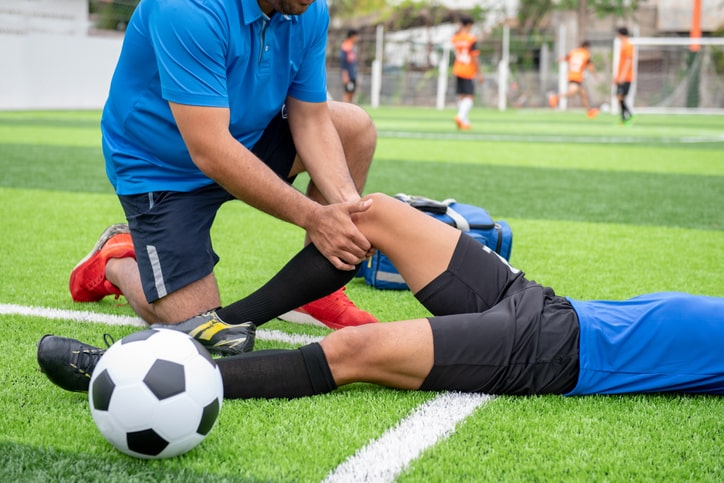Free Classifieds at CANetAds.com - View Item Content by ID 2783142

Item ID 2783142 in Category: Health & Beauty - Fitness
Cannot view this item. It could be pending, expired or deleted.
Below item is randomly selected from the same category and may have similar content.
Common Injuries in Triathletes & How to Manage Them | |
Free Online Advertising Free Internet Web Site Advertising. UK Free Classifieds United Kingdom Free Ads Website. 100% Free Ad Posting. Canada Free Ads Popular Online Classifieds in Canada. No Sign up, No Email Required to Post. Triathlons combine swimming, cycling, and running, demanding peak performance from every muscle group. While it’s a sport that promotes fitness and endurance, it also places a high level of strain on the body. Triathletes on the Gold Coast often experience injuries due to the repetitive nature of the activities, improper technique, and overtraining. Whether you’re a seasoned triathlete or just starting, knowing the most common injuries and how to manage them is essential for staying injury-free. With the expertise of a Sports Injury Specialist Gold, you can recover quickly and return to your training with confidence. Most Common Injuries in Triathletes Runner’s Knee (Patellofemoral Pain Syndrome) The repetitive motion of running can cause pain around the kneecap, leading to inflammation and discomfort. This condition, known as runner's knee, is common in triathletes, particularly when running on hard surfaces or without proper warm-up. IT Band Syndrome Iliotibial band (ITB) syndrome occurs when the IT band, which runs along the outside of the thigh, becomes tight or inflamed. This can lead to pain on the outer knee and is a common issue for triathletes due to excessive running or cycling. Achilles Tendonitis Repeated stress from running or cycling can lead to inflammation of the Achilles tendon. Achilles tendonitis can cause pain and swelling at the back of the heel, making it difficult to push off when running. Shin Splints Overuse during running, especially if the athlete suddenly increases the intensity or volume of their training, can lead to shin splints. This condition is characterised by pain in the lower legs and is often a result of improper footwear or training on hard surfaces. Swimmer’s Shoulder Swimming, particularly in open water, can put a strain on the shoulders. Swimmer's shoulder is caused by the repetitive overhead motion during the freestyle stroke, leading to pain and inflammation in the rotator cuff. Lower Back Pain Cycling and running in improper posture, combined with weak core muscles, can lead to lower back pain. Triathletes often experience discomfort in the lower back due to prolonged sitting in a cycling position or poor posture during the run. Injury Prevention for Triathletes Cross-Training and Recovery Triathletes benefit from training across multiple disciplines to avoid overuse injuries. Cross-training helps reduce the repetitive strain on specific muscles while improving overall performance. Additionally, proper recovery, including rest days and active recovery like swimming or light cycling, helps reduce the risk of injuries. Proper Technique and Form Maintaining proper technique during swimming, cycling, and running is crucial for injury prevention. Whether it’s ensuring a smooth swimming stroke, an efficient cycling posture, or a balanced running form, using correct technique reduces strain on joints and muscles. A coach or Sports Injury Specialist Gold can assess your technique and help make necessary adjustments. Strengthening and Stretching Strength training, particularly for the core, legs, and upper body, is essential for triathletes. A strong core helps maintain good posture, while strong leg muscles support running and cycling. Regular stretching of key muscle groups such as the hamstrings, quads, and calves keeps muscles flexible and reduces the risk of strains. Progressive Training Plan Avoid the temptation to increase your training load too quickly. Triathletes should follow a structured and progressive training plan that gradually builds endurance and strength. A gradual increase in intensity and distance allows the body to adapt to the stresses of the sport. Proper Footwear and Equipment Using the right shoes for running and cycling is essential in preventing injuries like shin splints and Achilles tendonitis. Ill-fitting or worn-out footwear can lead to discomfort and injury. Additionally, ensuring that your bike is properly fitted can prevent back, hip, and knee injuries during cycling sessions. Managing Injuries and Recovery Even with the best prevention strategies, injuries can still happen. Early intervention is key. If you’re experiencing pain or discomfort, a Sports Injury Specialist Gold can help identify the cause of the injury and provide appropriate treatment. This may include physiotherapy, massage therapy, or injury-specific rehabilitation exercises designed to restore function and prevent future issues. Stay in the Race: Injury-Free Triathlons are challenging, but they also offer a rewarding experience for athletes. By taking steps to prevent injuries and seeking expert care when needed, triathletes can continue to compete at their best and achieve their goals without being sidelined by injury. Whether you're dealing with an existing issue or want to prevent one, partnering with a Sports Injury Specialist Gold will help you stay fit, healthy, and ready for race day.  | |
| Related Link: Click here to visit item owner's website (1 hit) | |
| Target Prov.: All Provinces Target City : All Cities Last Update : Apr 12, 2025 1:40 AM Number of Views: 32 | Item Owner : isabella Contact Email: (None) Contact Phone: (None) |
| Friendly reminder: Click here to read some tips. | |
© 2025 CANetAds.com
USNetAds.com | GetJob.us | UKAdsList.com | AUNetAds.com | INNetAds.com | CNNetAds.com | Hot-Web-Ads.com | USAOnlineClassifieds.com
2025-04-15 (0.624 sec)